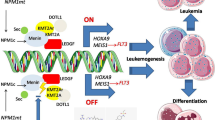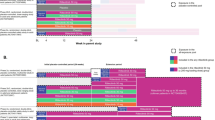Abstract
Histone deacetylase (HDAC) inhibitors are emerging as promising treatments for hematological malignancies, with potential applications extending to solid tumors in the future. Given their wide-ranging biological effects, there is a pressing need for a thorough understanding of the toxicities linked to HDAC inhibition. In this study, a pharmacovigilance analysis was conducted using the FDA Adverse Event Reporting System database. Suspected adverse events linked to HDAC inhibitors were detected through various statistical methodologies, including reporting odds ratio, proportional reporting ratio, information component, and Empirical Bayes Geometric Mean. Our study findings have illuminated that, among the total reported cases examined, gastrointestinal disorders accounted for 13% patients of the cohort, while lymphatic system disorders comprised 8% cases of the cohort, all of which manifested as adverse events induced by HDAC inhibitors. Importantly, the usage of HDAC inhibitors was found to be associated with incidents of atrial fibrillation, heart failure, respiratory failure, hepatic dysfunction, and acute kidney injury. Romidepsin and belinostat demonstrated more pronounced signals of adverse events compared to panobinostat and vorinostat, emphasizing the need for vigilant monitoring of adverse events in this particular population. Furthermore, atrial fibrillation (clinical priority score of 7 points) emerged as the paramount medical event warranting utmost clinical attention. Eventually, multiple adverse events were observe to emerge within the initial and second months following the initiation of treatment. Vigilant monitoring and supportive care strategies are critical in addressing the toxicities associated with HDAC inhibitors, particularly those concerning cardiotoxicity, respiratory toxicity, renal toxicity, and hepatotoxicity.




Similar content being viewed by others
Data availability
No datasets were generated or analysed during the current study.
Abbreviations
- AEs:
-
Adverse events
- CTL:
-
Cutaneous T-cell lymphoma
- EBGM:
-
Empirical Bayes Geometric Mean
- EMA:
-
European Medicines Agency
- FDA:
-
United States Food and Drug Administration
- FAERS:
-
FDA Adverse Event Reporting System
- HDACs:
-
Histone deacetylases
- IC:
-
Information component
- MM:
-
Multiple myeloma
- PTL:
-
Peripheral T-cell lymphoma
- PRR:
-
Proportional reporting ratio
- PT:
-
Preferred term
- ROR:
-
Reporting odds ratio
- SOCs:
-
System organ classes
References
Shetty MG, Pai P, Deaver RE et al (2021) Histone deacetylase 2 selective inhibitors: a versatile therapeutic strategy as next generation drug target in cancer therapy. Pharmacol Res 170:105695
Shvedunova M, Akhtar A (2022) Modulation of cellular processes by histone and non-histone protein acetylation. Nat Rev Mol Cell Biol 23:329–349
Shah R (2019) Safety and tolerability of histone deacetylase (HDAC) inhibitors in oncology. Drug Saf 42:235–245
Bondarev A, Attwood M, Jonsson J et al (2021) Recent developments of HDAC inhibitors: emerging indications and novel molecules. Br J Clin Pharmacol 87:4577–4597
Schaefer E, Loaiza-Bonilla A, Juckett M et al (2009) A phase 2 study of vorinostat in acute myeloid leukemia. Haematologica 94:1375–1382
Hainsworth JD, Daugaard G, Lesimple T et al (2015) Paclitaxel/carboplatin with or without belinostat as empiric first-line treatment for patients with carcinoma of unknown primary site: a randomized, phase 2 trial. Cancer 121:1654–1661
San-Miguel JF, Hungria VTM, Yoon S-S et al (2014) Panobinostat plus bortezomib and dexamethasone versus placebo plus bortezomib and dexamethasone in patients with relapsed or relapsed and refractory multiple myeloma: a multicentre, randomised, double-blind phase 3 trial. Lancet Oncol 15:1195–1206
Shi Y, Dong M, Hong X et al (2015) Results from a multicenter, open-label, pivotal phase II study of chidamide in relapsed or refractory peripheral T-cell lymphoma. Ann Oncol 26:1766–1771
Yan Y-D, Zhao Y, Zhang C et al (2022) Toxicity spectrum of immunotherapy in advanced lung cancer: a safety analysis from clinical trials and a pharmacovigilance system. EClinicalMedicine 50:101535
Yuan T, Li F, Hou Y et al (2023) Adverse events in patients with advanced urothelial carcinoma treated with erdafitinib: a retrospective pharmacovigilance study. Front Pharmacol 14:1266890
Alkabbani W, Gamble J-M (2023) Active-comparator restricted disproportionality analysis for pharmacovigilance signal detection studies of chronic disease medications: an example using sodium/glucose cotransporter 2 inhibitors. Br J Clin Pharmacol 89:431–439
Raschi E, Gatti M, Gelsomino F et al (2020) Lessons to be learnt from real-world studies on immune-related adverse events with checkpoint inhibitors: a clinical perspective from pharmacovigilance. Target Oncol 15:449–466
Grundmark B, Holmberg L, Garmo H et al (2014) Reducing the noise in signal detection of adverse drug reactions by standardizing the background: a pilot study on analyses of proportional reporting ratios-by-therapeutic area. Eur J Clin Pharmacol 70:627–635
Gatti M, Antonazzo IC, Diemberger I et al (2021) Adverse events with sacubitril/valsartan in the real world: emerging signals to target preventive strategies from the FDA adverse event reporting system. Eur J Prev Cardiol 28:983–989
Gaucher L, Sabatier P, Katsahian S et al (2023) Pharmacovigilance studies without a priori hypothesis: systematic review highlights inappropriate multiple testing correction procedures. J Clin Epidemiol 162:127–134
Falchi L, Ma H, Klein S et al (2021) Combined oral 5-azacytidine and romidepsin are highly effective in patients with PTCL: a multicenter phase 2 study. Blood 137:2161–2170
Du J, Han X, Lin S et al (2021) Efficacy and treatment-related adverse events of romidepsin in PTCL clinical studies: a systematic review and meta-analysis. Front Med 8:732727
Cavenagh JD, Popat R (2018) Optimal management of histone deacetylase inhibitor-related adverse events in patients with multiple myeloma: a focus on panobinostat. Clin Lymphoma Myeloma Leuk 18:501–507
O’Connor OA, Horwitz S, Masszi T et al (2015) Belinostat in patients with relapsed or refractory peripheral T-Cell lymphoma: results of the pivotal phase II BELIEF (CLN-19) study. J Clin Oncol 33:2492–2499
Rai S, Kim WS, Ando K et al (2023) Oral HDAC inhibitor tucidinostat in patients with relapsed or refractory peripheral T-cell lymphoma: phase IIb results. Haematologica 108:811–821
Leong DP, Caron F, Hillis C et al (2016) The risk of atrial fibrillation with ibrutinib use: a systematic review and meta-analysis. Blood 128:138–140
Hahn VS, Zhang KW, Sun L et al (2021) Heart failure with targeted cancer therapies: mechanisms and cardioprotection. Circ Res 128:1576–1593
Li P, Ge J, Li H (2020) Lysine acetyltransferases and lysine deacetylases as targets for cardiovascular disease. Nat Rev Cardiol 17:96–115
Zduniak A, Lévêque E, Perdrix A et al (2022) Cardiovascular outcomes of patients treated for non-Hodgkin lymphoma with first-line doxorubicin-based chemotherapy. Leuk Lymphoma 63:3340–3350
Peng X, Huang M, Zhao W et al (2022) RAGE mediates airway inflammation via the HDAC1 pathway in a toluene diisocyanate-induced murine asthma model. BMC Pulm Med 22:61
Chun P (2018) Therapeutic effects of histone deacetylase inhibitors on kidney disease. Arch Pharmacal Res 41:162–183
Miura K, Taura K, Kodama Y et al (2008) Hepatitis C virus-induced oxidative stress suppresses hepcidin express ion through increased histone deacetylase activity. Hepatology (Baltimore, MD) 48:1420–1429
Zhou C, Peng S, Lin A et al (2023) Psychiatric disorders associated with immune checkpoint inhibitors: a pharmacovigilance analysis of the FDA Adverse Event Reporting System ( FAERS) database. EClinicalMedicine 59:101967
Acknowledgements
We appreciate the work of the FAERS database (https://www.fda.gov/).
Funding
This work was supported by the Science and Technology Program of Guangzhou, China (202102080498 to W. Wang).
Author information
Authors and Affiliations
Contributions
Wenjie Li & YiMing Fu: Conceptualization, methodology, data curation, software and writing-review & editing. Wei Wang: Funding acquisition, project administration, supervision and validation. The work reported in the paper has been performed by the authors, unless clearly specified in the text.
Corresponding author
Ethics declarations
Ethics approval
No ethics approval and written consent were needed for the secondary analysis of public data.
Consent for publication
Not applicable.
Competing interests
The authors declare no competing interests.
Additional information
Publisher's Note
Springer Nature remains neutral with regard to jurisdictional claims in published maps and institutional affiliations.
Highlights
(1) Neglected post-marketing research on HDAC inhibitors prompts pharmacovigilance analysis.
(2) Our Study finds gastrointestinal disorders and lymphatic system disorders as major AEs.
(3) HDAC inhibitors link to atrial fibrillation, heart/respiratory failure, hepatic dysfunction, kidney injury.
(4) Romidepsin and belinostat show stronger signals of adverse events; vigilant monitoring imperative.
Supplementary Information
Below is the link to the electronic supplementary material.
Rights and permissions
Springer Nature or its licensor (e.g. a society or other partner) holds exclusive rights to this article under a publishing agreement with the author(s) or other rightsholder(s); author self-archiving of the accepted manuscript version of this article is solely governed by the terms of such publishing agreement and applicable law.
About this article
Cite this article
Li, W., Fu, Y. & Wang, W. A real-world pharmacovigilance study investigating the toxicities of histone deacetylase inhibitors. Ann Hematol (2024). https://doi.org/10.1007/s00277-024-05691-2
Received:
Accepted:
Published:
DOI: https://doi.org/10.1007/s00277-024-05691-2




